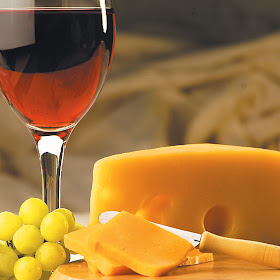I got on a scone kick a couple of weeks ago. I stumbled across this recipe for strawberry scones, and they were so good, I decided to try them again with bananas and chocolate chips. Well, let me tell you, they were yummy! Next time, I want to try shredded apples and cinammon chips...doesn't that sound good too? The possibilities are endless!
However you decide to make your scones, the basic recipe I found is now my "go-to" favorite. I honestly don't think I will ever stray away from it. Scones are best eaten the day they are made, but they will keep for 2-3 days on the counter. Take my advise...make a batch, eat some, and freeze the rest. Reheat in the oven, toaster oven, or microwave, and they will taste freshly-baked.
Banana Scones with Chocolate Chips
3 tablespoons sugar (granulated)
2 cups all-purpose flour
2 teaspoons baking powder
1/4 teaspoon salt2 cups all-purpose flour
2 teaspoons baking powder
6 tablespoons cold butter, cut into cubes
2/3 cup half-and-half or cream or cold buttermilk
1 medium, lightly speckled banana, not too soft, not too firm
1/2 cup semi-sweet chocolate chips.
Additional sugar to toss fruit and sprinkle on top
Dice the banana and toss with 1/2 tablespoon of sugar. Set aside.
Preheat oven to 400 degrees.
In a large bowl, combine the flour, baking powder, and salt. Use a pastry cutter or your hands to work in the butter until it is evenly distributed into the flour mixture, with a few small, pea sized bits of butter visible.
Make a well in the middle of the mixture, and add the buttermilk all at once. Gently stir dough together (the hands are the best tool for this job!), until everything is moist. Add in the bananas and chocolate chips, and again, very gently knead the dough just until it comes together.
Dump the dough out onto a floured work surface. Use just enough flour to keep the mixture from sticking but try not to overdo it...too much flour makes tough scones.
I learned that lesson when I accidently sprinkled one batch too liberally with flour...they baked up beautifully, but the scones were slightly tough and chewy, instead of soft and flaky.
Pat dough out carefully into a circle, about 3/4" thick. You can sprinkle the top with a bit more flour if it's too sticky.
Cut into 8 wedges...you can make 2 discs of dough, and cut them to make mini-scones if you'd like.
Carefully transfer to a lightly greased baking sheet, keeping them about 1/2" apart. If any chocolate chips or banana bits are peeking out, gently push them back in so they don't fall out during baking.
Bake at 400 degrees for about 10 minutes. Pull the sheet out, and sprinkle each scone with a bit of sugar...it makes a nice, crunchy topping.
Continue to bake for another 10-15 minutes or until the scones spring back when touches, and are lightly brown on top. Watch them carefully...they will overbake easily, and dry scones are not good!
When they're done, wait a couple of minutes before moving to a rack to cool completely. Serve the same day, or freeze and reheat as needed.
Of course, my Rebecca LOVED these scones, as did Gabriel and my hubby. Oh, and I did too. ;-)
Of course, my Rebecca LOVED these scones, as did Gabriel and my hubby. Oh, and I did too. ;-)
And in case you're wondering...here's a pic of the strawberry scones I made first. I'm tellin' ya...they were good. So good, they disappeared in less than 2 days. I'm not going to tell you how many I had. Nope...not gonna tell! :-)
Scones take no time to make, and it's fun to try different fruits. Blueberries, diced peaches, raisins, are some other ingredients I'd like to try. And you don't have to stick to sweet scones. How about some savory combinations, like ham and cheese, rosemary and garlic, or blue cheese and walnuts? If you try something different, let me know...I'd love to hear from you. I knowI'll be on a scone kick again soon!
God Bless your table tonight!























































